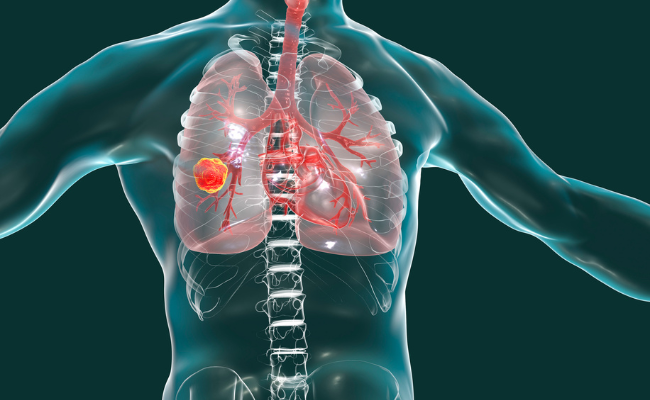How to Treat Tuberculosis Pleural?
- January 24, 2024
- No Comments
What is Tuberculosis Pleural?
Tuberculosis pleural, or pleurisy, is inflammation of the pleura caused by Mycobacterium tuberculosis. This bacterium also leads to pulmonary tuberculosis, a curable disease with early diagnosis and antibiotic treatment. Historically widespread, especially in the 18th and 19th centuries, advancements in antibiotics and living standards reduced TB in industrialized nations. However, it remains a top global cause of death, with 95% of cases in developing countries. Despite the decline in some areas, over 9.6 million people have active TB, emphasizing the ongoing significance. Protecting against TB is crucial, given its potential for life-threatening complications and permanent lung damage if left untreated. Global efforts for public health, healthcare access, and awareness are essential in addressing the persistent challenges posed by tuberculosis.
Why Does Tuberculosis Pleural Occur?
Tuberculosis pleural is a complication of tuberculosis, a contagious bacterial infection that primarily affects the lungs. The bacteria can spread to the pleura, leading to inflammation. The immune system's response to the infection triggers the accumulation of fluid in the pleural space, causing pleural effusion. This condition can result in various symptoms, including chest pain, difficulty breathing, and persistent cough.
How is Tuberculosis Pleural Treated?
The treatment of tuberculosis pleural involves a comprehensive approach, including medical intervention and supportive care. The primary goals are to eliminate the tuberculosis infection, reduce inflammation in the pleura, and manage symptoms effectively.
- Diagnostic Procedures: The first step in treating tuberculosis pleural involves accurate diagnosis. This typically includes imaging studies such as chest X-rays or CT scans, as well as laboratory tests like sputum cultures and pleural fluid analysis. These diagnostic procedures help identify the presence of tuberculosis bacteria and assess the extent of pleural effusion.
- Antibiotic Therapy: The cornerstone of tuberculosis pleural treatment is antibiotic therapy. A combination of antimicrobial drugs, such as isoniazid, rifampin, ethambutol, and pyrazinamide, is prescribed for an extended period, often lasting several months. This prolonged course is necessary to eradicate the bacteria and prevent the development of drug-resistant strains.
- Corticosteroids: In cases where there is significant inflammation and to reduce the risk of complications, corticosteroids may be prescribed. Medications like prednisone help suppress the immune response and alleviate inflammation in the pleura. However, the use of corticosteroids is carefully monitored due to potential side effects.
- Thoracentesis: To relieve symptoms and aid in the diagnosis, thoracentesis may be performed. This procedure involves the removal of excess fluid from the pleural space using a needle. Analyzing the fluid can provide valuable information about the underlying cause and guide further treatment.
- Surgical Intervention: In some cases, particularly when pleural effusion persists despite medical treatment, surgical intervention may be necessary. Procedures like pleurodesis or decortication may be performed to remove or prevent the recurrence of fluid accumulation.
Treatment Solutions for Tuberculosis Pleural:
- Directly Observed Therapy (DOT): To ensure that patients adhere to their medication regimen and complete the full course of antibiotics, Directly Observed Therapy (DOT) is often employed. This approach involves healthcare professionals or trained observers supervising the patient as they take their medications. DOT helps improve treatment adherence, reduce the risk of drug resistance, and enhance overall treatment success.
- Adjuvant Therapies: Alongside conventional antibiotic treatment, various adjuvant therapies may be utilized to enhance the effectiveness of tuberculosis pleural treatment. These can include nutritional support, respiratory therapy, and lifestyle modifications. Ensuring a well-balanced diet and maintaining overall health is crucial to support the immune system during the recovery process.
- Patient Education and Support: Educating patients about the importance of medication adherence, the duration of treatment, and potential side effects is crucial for successful tuberculosis pleural management. Support groups and counseling services can provide emotional support, helping patients cope with the challenges associated with a prolonged treatment course.
Benefits of Treating Tuberculosis Pleural:
- Prevention of Complications: Prompt and effective treatment of tuberculosis pleural helps prevent the progression of the disease and minimizes the risk of complications. Untreated tuberculosis can lead to severe respiratory issues, organ damage, and even death.
- Reduced Transmission of Infection: Timely treatment not only benefits the individual patient but also contributes to public health by reducing the transmission of tuberculosis. Controlling the spread of the infectious bacteria is essential in preventing new cases and outbreaks in the community.
- Improved Quality of Life: Successful treatment of tuberculosis pleural results in symptom relief, improved lung function, and an enhanced quality of life for the affected individuals. Resolving pleural effusion and addressing the underlying infection contribute to the overall well-being of patients.
- Prevention of Drug-Resistant Strains: Completing the full course of antibiotic therapy as prescribed helps prevent the development of drug-resistant strains of tuberculosis bacteria. Adherence to treatment guidelines is crucial in mitigating the global challenge of antibiotic resistance.











Comments (0)
No comments yet